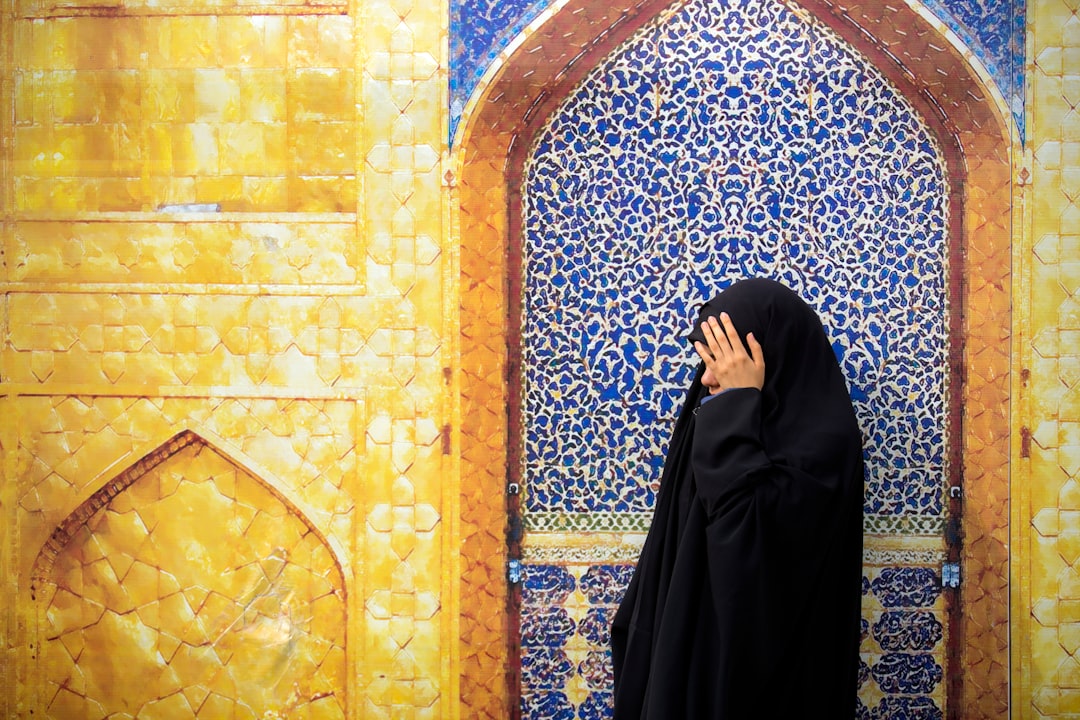Have you heard of the term “Circumcision of the Heart”? This spiritual concept has been around for centuries, yet is still relevant today. In this blog post, we’ll delve into the history of circumcision, explore the significance of circumcision of the heart, and understand how it relates to spiritual growth. Read on to discover what circumcision of the heart really means and how it can lead to a transformation of faith.
The History and Significance of Circumcision

Circumcision is a religious ritual that has been practiced for centuries in many cultures and religions. The act of circumcision involves the removal of the foreskin of the male genitalia. While this practice is still common today in some parts of the world, it is not as prevalent as it once was.
In the Old Testament, circumcision was originally a sign of the covenant between God and Abraham. As we can see in Genesis 17:10-14, God commanded Abraham to circumcise all of his male descendants as a symbol of their faith in God. Later on, in the New Testament, circumcision was replaced by baptism as a sign of our faith in Jesus Christ.

While the physical act of circumcision has been debated and modified over time, the concept of circumcision of the heart remains an essential part of many religions. It refers to the spiritual transformation of an individual’s faith, the purification of their soul and the turning away from sinful behavior.
Circumcision of the heart is not just a symbolic act. It is a lifestyle of faith that reflects a deep commitment to one’s beliefs. When one undergoes a circumcision of the heart, they turn away from their own selfish desires and focus on the well-being of others, seeking to embody the grace of God. This requires a constant effort to renew one’s heart and mind through prayer, study of the bible, and acts of service.
Throughout history, circumcision of the heart has been central to many religious teachings. In Islam, it is known as “Taubah,” meaning repentance. In Christianity, it is part of the process of salvation, where one renounces their sins and seeks forgiveness from God. In Judaism, circumcision of the heart is seen as an essential part of repentance and a way to achieve closeness with God through self-reflection and honesty.
To achieve circumcision of the heart, one must first recognize their own sinfulness and their need for God’s grace. Then, they must turn away from their old ways and seek forgiveness and redemption through repentance. This process requires humility, self-reflection, and a willingness to embrace change.
The benefits of circumcision of the heart are numerous. It can lead to spiritual growth, personal transformation, and a closer relationship with God. It can also bring individuals closer together in their faith communities, fostering a sense of unity and shared purpose. By living a life of faith, individuals can find peace, joy, and fulfillment beyond the material world.
In conclusion, circumcision of the heart is a fundamental aspect of many religious traditions. While the physical act of circumcision is no longer as prevalent as it once was, the concept of circumcision of the heart remains a vital part of many faiths. Through repentance, self-reflection, and spiritual transformation, individuals can achieve a deeper level of faith and a closer relationship with God.
Understanding the Concept of Circumcision of the Heart
Circumcision of the heart refers to a spiritual transformation that happens when an individual experiences a change of heart, turning away from sin and turning towards God. It is not a physical act like the traditional circumcision practiced in Judaism, but a symbolic act that represents a change in behavior and attitude towards God.
In the Old Testament, God commanded the Israelites to perform physical circumcision as a sign of the covenant between God and Abraham. It was a ritual act of purification that set them apart as God’s chosen people. However, as time passed, the Israelites lost sight of the true meaning of circumcision, which was to be a sign of their commitment to God and an outward expression of their inner faith.
The New Testament speaks of true circumcision of the heart in which the believer’s heart is transformed by God’s grace through faith in Jesus Christ. In Colossians 2:11-12, it says “In Him you were also circumcised with a circumcision not performed by human hands. Your whole self-ruled by the flesh was put off when you were circumcised by Christ, having been buried with Him in baptism, in which you were also raised with Him through your faith in the working of God, who raised Him from the dead.”

This passage shows that the true circumcision happens through a spiritual rebirth in Christ, in which our old self is put off, and we are made new in Him. It is a transformational process that requires repentance, the acknowledgement of our sin, and the surrender of our lives to Christ.
Through this process, we are able to experience forgiveness, grace, and transformation. We are no longer ruled by our sinful nature, but we are empowered to live a life pleasing to God. The circumcision of the heart is a crucial element in our spiritual growth and journey of faith. It is an ongoing process that requires daily surrender to God and a commitment to following Him.
In conclusion, understanding the concept of circumcision of the heart is essential to our spiritual growth and relationship with God. It is not a mere outward expression, but a deep-seated change that happens in our hearts when we surrender ourselves to Christ. May we all strive to experience this transformational process and continue to grow in our faith.
Circumcision of the Heart in Religious Texts
Many religious texts, including the Bible, mention circumcision of the heart as a vital practice in spiritual growth. While the Old Testament speaks of physical circumcision, the New Testament emphasizes the importance of the circumcision of the heart. Here are some examples:
-
Old Testament
In the Old Testament, circumcision was a physical act that marked the covenant between God and the Israelites. God commanded Abraham to circumcise himself and all the males in his household as a sign of the covenant between them. It was a permanent reminder that they were the chosen people of God. Circumcision was also a purification ritual that symbolized the removal of sin. -
New Testament
In the New Testament, the concept of circumcision of the heart is introduced. This means that the act of physical circumcision is no longer necessary. Instead, believers are called to have a spiritual transformation of faith. In the book of Romans, Paul writes, “For he is not a Jew who is one outwardly, nor is circumcision that which is outward in the flesh. But he is a Jew who is one inwardly, and circumcision is that of the heart, in the Spirit, not in the letter; whose praise is not from men but from God” (2:28-29). He is saying that being born of Jewish blood or following the law is not what makes someone a true Jew. The real Jew is one who has had an inner transformation that is brought about by the Holy Spirit. -
Islam
Circumcision is also a requirement of Islam, though it is not mentioned in the Quran. Instead, it is based on the practice of the Prophet Muhammad. It is seen as a symbol of cleanliness and a way to distinguish oneself as a Muslim. The practice is typically done when a boy reaches the age of seven. -
Judaism
Circumcision is a vital part of the Jewish tradition. According to Jewish law, it should be done on the eighth day of a boy’s life. It is a symbol of the covenant between God and the Jewish people and is seen as a necessary step towards forgiveness and redemption. -
Christianity
Circumcision of the heart is an essential part of Christian theology. It is viewed as a turning point in one’s life and a way to become closer to God. In the act of circumcision of the heart, believers are called to repent and turn from their sin. By doing this, they are able to experience the grace of God and take part in spiritual rebirth.
In conclusion, circumcision of the heart is a common theme across various religious traditions. While the physical act of circumcision has cultural and religious significance, it is the circumcision of the heart which carries the most spiritual weight. Those who undergo this transformation experience forgiveness and redemption, bringing them closer to God and their individual faith communities.
The Role of Circumcision of the Heart in Spiritual Growth
As a Christian, you may have heard the phrase “circumcision of the heart” and wondered what it means for your faith. Circumcision of the heart pertains to a spiritual transformation, a purification of the heart, and a turning away from sin and towards God.
« Unveiling the Truth Behind Spiritual Adultery: Understanding Its Causes and Consequences.
The Truth About Jesus and Baptism »
The concept of circumcision of the heart is rooted in the Old Testament in Deuteronomy 10:16, where it is written, “Circumcise, therefore, the foreskin of your heart and be no longer stubborn.” This means that one must remove the barriers between themselves and God through repentance. In essence, circumcision of the heart is a spiritual circumcision that cleanses the soul, opening them up to God’s grace.
However, in the New Testament, circumcision of the heart takes on a more spiritual meaning in light of the teachings of Jesus Christ. In Romans 2:28-29, it is made clear that circumcision of the heart is not a physical act but something that is done inwardly. The passage says, “For no one is a Jew who is merely one outwardly, nor is circumcision outward and physical. But a Jew is one inwardly, and circumcision is a matter of the heart, by the Spirit, not by the letter.” It is through the Holy Spirit that we receive spiritual cleansing, not through any ritual or physical action.
So, what is the role of circumcision of the heart in spiritual growth? The act of circumcision of the heart is a symbolic representation of repentance and a willingness to turn away from sin and towards God. It is through this repentance that we enter into a closer relationship with God and receive His grace. As Christians, we believe that it is only through the grace of God that we are saved.
In order to achieve circumcision of the heart, one must take certain steps. The first step is to acknowledge one’s sin and ask for forgiveness. One must then turn away from their sins and strive to live a life that is pleasing to God. Additionally, one must be open to the transformative power of the Holy Spirit. Through the Holy Spirit, we are able to overcome our sinful nature and become more like Christ.

Ultimately, the benefits of achieving circumcision of the heart are immeasurable. By allowing God to cleanse our hearts and draw us closer to Him, we are able to experience spiritual growth and transformation. Our relationships with God, ourselves, and others are strengthened and we are better equipped to serve God’s purpose in our lives.
In conclusion, circumcision of the heart is a spiritual transformation that cleanses the soul and opens one up to God’s grace. Through repentance and a willingness to turn away from sin, we can achieve circumcision of the heart and experience spiritual growth.
Steps to Achieving Circumcision of the Heart
If you’re looking to embark on a journey of spiritual transformation, and you’re interested in achieving circumcision of the heart, there are a few steps you can take to achieve this goal. Here are some of the most important steps you can take:
-
Acknowledge Your Sins and Repent
To start the journey to a circumcised heart, you must first recognize your sins and seek forgiveness. Repentance is essential if you want to enter into a right relationship with God. Confess your sins and ask God to forgive you, and then make a commitment to turn away from those sins. True repentance involves a change in behavior and attitude. -
Foster a Deep Relationship with God
To achieve a circumcised heart, you must also develop a deep relationship with God. This requires spending regular time with Him in prayer and meditation, studying His word in the Bible, and attending religious services. Make God the center of your life and allow Him to guide your thoughts and actions. -
Surrender Your Will to God
A circumcised heart requires a deep level of surrender to God’s will. Trust in God completely, and give Him control over your life. This means letting go of your own plans and desires and seeking to do His will instead. -
Embrace the Holy Spirit
The Holy Spirit is a powerful force that can help us in our spiritual transformation. Allow the Holy Spirit to work in your life, guiding your decisions and filling you with wisdom and peace. Be open to the Holy Spirit’s presence in your life, and seek to follow His lead as you grow and change. -
Practice Forgiveness
Forgiveness is essential if you want to achieve a circumcised heart. This means learning to forgive others when they hurt you, and seeking forgiveness yourself when you have wronged someone. Forgiveness allows us to let go of resentment and bitterness, and it brings us closer to God and our fellow human beings.
In summary, achieving circumcision of the heart is a journey that requires deep commitment, surrender, and dedication to God’s will. By acknowledging our sins, developing a relationship with Him, surrendering our wills, embracing the Holy Spirit, and practicing forgiveness, we can grow closer to God and allow Him to transform us from the inside out.
Benefits of Circumcision of the Heart for the individual and their community

The concept of circumcision of the heart is not only a religious or spiritual one, but it also has various benefits for individuals and their communities. Here are some significant benefits of circumcision of the heart:
-
Increased Inner Peace and Confidence:
Circumcision of the heart leads to self-awareness and helps to cultivate inner peace and confidence. When one is fully aware of their thoughts, feelings, and emotions, they can accept and understand themselves in a more profound way, leading to greater self-confidence and inner peace. This inner peace and confidence can help individuals to lead more fulfilling and satisfying lives. -
Improved Relationships:
Circumcision of the heart helps individuals to develop empathy and to understand and be compassionate towards others. This, in turn, leads to improved relationships and communication skills. It allows individuals to be more patient, forgiving, and kind to others, leading to better relationships and a more harmonious community. -
Greater Spiritual Connection:
Circumcision of the heart allows individuals to connect with God on a deeper level. By removing the barriers between an individual and God, circumcision of the heart opens up the gates to a more profound level of spirituality, leading to greater inner peace, joy, and fulfillment. -
Positive Impact on the Community:
Circumcision of the heart not only benefits the individual but also has a positive impact on the community. When individuals become more self-aware, empathetic and compassionate, they become agents of positive change in their communities. They learn to help and serve others and work towards the greater good, leading to a more harmonious and peaceful community.
In conclusion, circumcision of the heart is more than just a religious or spiritual practice; it’s a transformation that has various benefits for individuals and their communities. It helps individuals to cultivate inner peace, improve relationships, connect with God, and have a positive impact on their communities. Whether you are religious or not, circumcision of the heart can lead to a more fulfilling and satisfying life.












